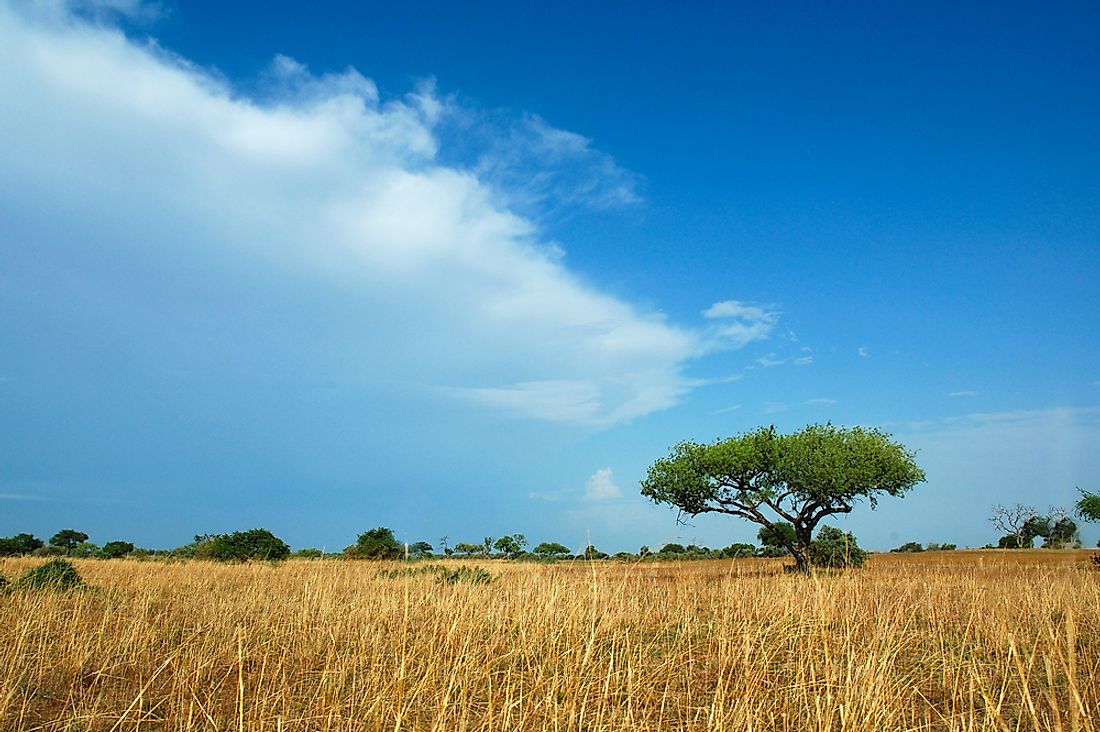The Wonders Of The Nine National Parks Of Cameroon

9. Waza National Park
The Waza National Park is located in the Logone-et-Chari Department of Cameroon. The national park was established as a hunting reserve in 1934 and achieved the status of national park in 1968. The park encompasses an area of 1,700 square km. The dominant vegetation of the park features the transition zone vegetation between the Sudan savannah and the Sahel. Acacia plants and open Yaéré savannah forests constitute the primary vegetation of the park. The Waza National Park houses 30 mammalian species including rare species like the red-fronted gazelle, korrigum, the African bush elephant, a dwindling lion population, olive baboon, hartebeest, vervet monkey, tsessebe, cheetah, leopard, and more. 379 bird species also reside in the national park.
8. Nki National Park
The Nki National Park is located in southeastern Cameroon and has been described as "the last true wilderness” due to its remote location. Large parts of the forest still retain pristine natural beauty. The national park features a large and varied landscape with 265 bird species and a high population density of forest elephants. Chimpanzees, bushbucks, Nile crocodiles, leopards, giant forest hogs and more are also found in the Nki National Park. The animals at the park are highly susceptible to poaching. Illegal logging activities have also decimated the population of the national park.
7. Lobéké National Park
The Lobéké National Park is located in the Congo Basin of southeastern Cameroon. The Sangha River forms the boundary of the national park to the east. The park was declared a national park in October 1999 and encompasses an area of 1,838.55 square km. The Lobéké National Park is mainly a semi-evergreen forest with an incredible variety of plants including over 300 species of trees. The park serves as the home for some of the highest densities of western lowland gorillas and African forest elephants. 10 species of forest ungulates, gorillas, leopards, chimpanzees, 134 fish species, 18 reptilian species, and16 amphibian species live in the national park. The national park is also an important bird area and hosts more than 300 bird species. Timber exploitation, poaching for bushmeat and ivory, illegal fishing, and safari hunting are all major concerns here.
6. Korup National Park
The Korup National Park is located in Cameroon’s Southwest Province where it covers an area of 1,260 square km. It is one of the richest and oldest tropical forests on the continent in terms of the diversity of flora and fauna. The national park is the most accessible rainforest in the country. Several basic accommodation facilities exist here and an extensive network of trails allow tourists to explore the national park. The Korup National Park is also a popular birdwatching and primate viewing destination in the country. Of the 161 mammalian species living in the forest, 14 are primates.
5. Faro National Park
The Faro National Park, located near the Nigerian border of Cameroon, encompasses an area of 330,000 hectares. The area was initially designated as a reserve in 1947 and then upgraded to the national park level in 1968. Several hunting reserves border the Faro National Park on the eastern side. 243 species of plants grow in the region. Cheetahs, elephants, hippopotamuses are found here.
4. Campo Ma'an National Park
The Campo Ma'an National Park, established in 2000, encompasses an area of 264,064 hectares. Four logging concession zones, an agro-forestry zone, and an agro-industrial zone are part of the national park. The forest houses a rich biodiversity including several endemics. 87 mammalian species including lowland gorillas, giant pangolins, mandrills, black colobus, hippos, and elephants inhabit the Campo Ma'an National Park. 127 species of reptiles, 250 species of birds and hundreds of species of birds are also residents of the park. The ecosystem of this national park faces severe threats from poaching, illegal and unregulated logging, agricultural and coastal activities.
3. Boumba Bek National Park
Boumba Bek National Park is located between the Bek and Boumba rivers in southeast Cameroon. It was established as an Essential Protection Zone in 1995 and declared a national park in 2005. The park houses a rich biodiversity of plants and animals. It is made up of evergreen lowland rainforests and patches of closed-canopy evergreen forests. The park hosts a significant population of forest elephants and endangered gorillas. 300 fish species and 280 bird species are also reported here. Poaching activities are rampant in this forest.
2. Bouba Njida National Park
The Bouba Njida National Park occupies an area of 220,000 hectares in Cameroon. The national park was first established as a reserve in 1932 and then upgraded to the status of a national park in 1980. The park is famous for hosting one of the last surviving populations of a critically endangered canid, the painted hunting dog. 23 species of antelope also reside here. The Bouba Njida National Park was the sad witness to the massacre of 200 savannah elephants by poachers on horseback in 2012.
1. Bénoué National Park
The Bénoué National Park is a UNESCO designated Biosphere Reserve and national park in Cameroon. The reserve occupies an area of 180,000 hectares. The area was established as a Faunal Reserve in 1932 and upgraded to the status of a National Park in 1968. It is located in the Bénoué Department of northeastern Cameroon. Wooded grassland is the dominant type of vegetation in the national park. It hosts a small population of about 30 lions. Other animals found here include the spotted hyena, elephants, warthog, monkeys, waterbuck, Lord Derby’s eland, buffalo, etc. The rivers house hippos and crocodiles. More than 306 species of birds are found here.







